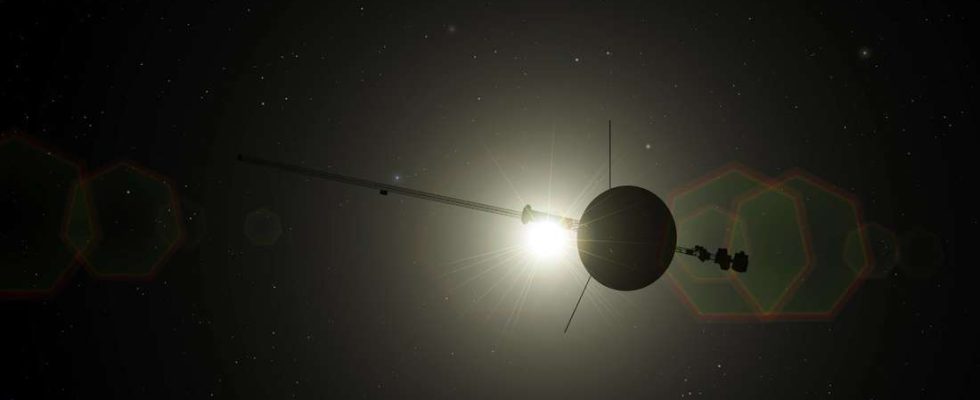Press
The legendary space probe “Voyager 1” has been struggling with communication problems for months. Now NASA has apparently achieved a breakthrough.
Pasadena – Communication with the NASA space probe “Voyager 1” has been disrupted since November 2023. Instead of meaningful data the aging probe only sends back “gibberish”.. The problem has been going on for a long time, the concern about the space probe, which was launched in September 1977 and has long since been Solar system has left is huge. But now the US space organization is reporting NASA a breakthrough.
| Voyager 1 |
| September 5, 1977, 12:56 UTC |
| 24,356,710,739 km |
| 24,372,427,865 km |
| 16.9995 km/s (equivalent to 61,198.2 km/h) |
| 22 hours, 34 minutes and 5 seconds |
| Source: NASA, as of March 15, 2024 |
On March 3rd, the “Voyager 1” space probe sent a different signal to Earth than in the long period before. The signal was not in the format that the probe normally uses, as in a NASA announcement is called. But an employee of NASA’s Deep Space Network telescope system managed to decode the signal. It contains the entire contents of the FDS memory – a system in which the “Voyager” team suspects the current problem.
NASA’s Voyager 1 spacecraft sends entire code to Earth
The signal that Voyager 1 sent to Earth contains all of the code: instructions for what Voyager should do, variables and values that can change based on the status of the probe, and scientific and technical data that contribute to it Earth should be sent.
For the team that has been trying to understand the strange signals from “Voyager 1” for months, it is a real treasure trove. The plan is now to compare the data with those that the space probe sent to Earth before the problem began. The Voyager team looks for discrepancies in the code and variables in hopes of finding the root cause of the problem.
NASA team carefully “nudged” “Voyager 1”
The new signal from “Voyager 1” results from a command that the NASA team sent into space on March 1st. The so-called “poke,” a kind of gentle “nudging,” was intended to prompt the presumably faulty FDS computer to test various sequences in its software package. The team’s hope: perhaps bypassing a corrupted section of memory will resolve the issue.
Now the team has new data to analyze. But this work will take time. NASA also emphasizes this in its statement: “Using this information to develop a possible solution and trying to put it into action takes time.” This is not because the “Voyager” team is working slowly , but rather the distance between the space probe and the Earth, which is around 24 billion kilometers.
It currently takes 22.5 hours for a signal from Earth to reach Voyager. A response from the spacecraft will take another 22.5 hours to reach the Deep Space Network antennas on Earth. So a lot of the time the team is busy waiting for a signal from Voyager – always hoping that the answer will be understandable next time. (tab)

